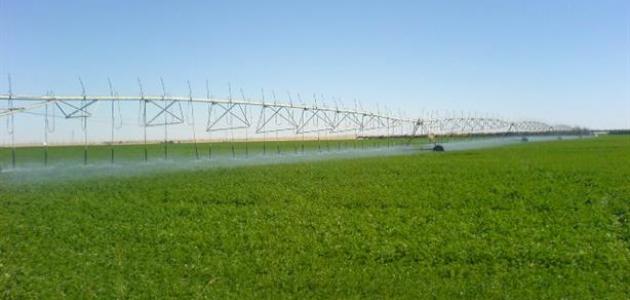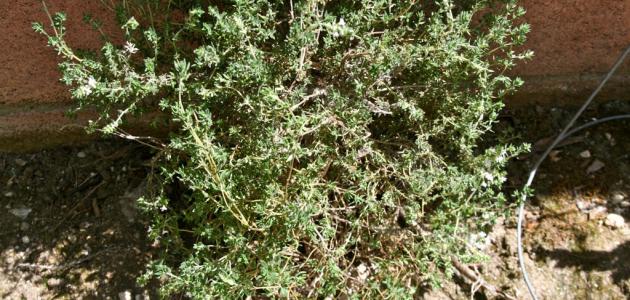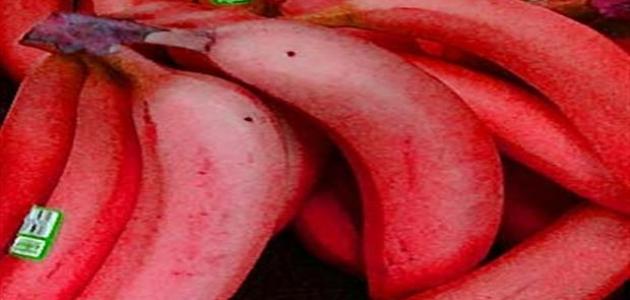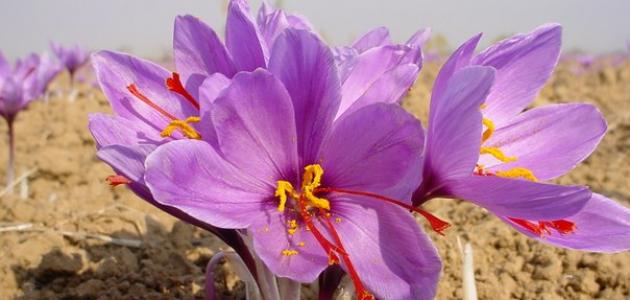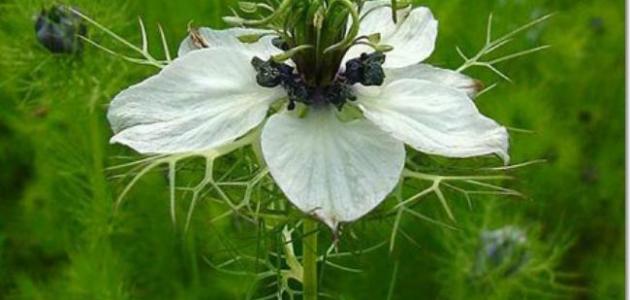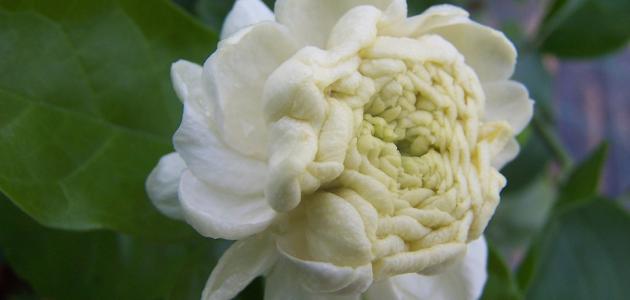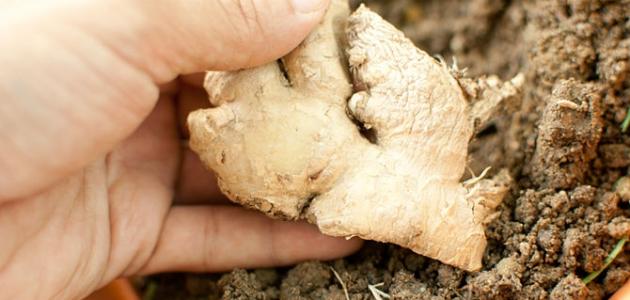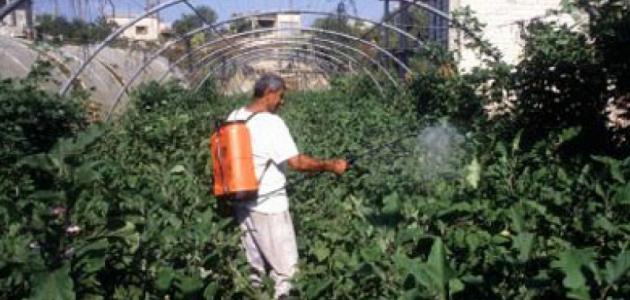How to grow wheat
climate conditions
The wheat plant adapts to various wet or dry environments or coastal areas, but the humid climate resulting from the increase in rainfall rates causes damage to the roots of crops and the spread of diseases, thus contributing to a decline in agricultural yields. Therefore, most wheat crops are grown in agricultural lands where the average rainfall ranges between 375 And 875 mm per year. On the other hand, the ideal temperature for wheat growth is 25 degrees Celsius, and the minimum temperature ranges between 3 and 4 degrees, while for the maximum temperatures it is 30-32 degrees Celsius.
Soil type
Wheat can be grown in different types of soil, provided that it is not too acidic or alkaline, and has the ability to retain water or drain it well and moderately, because wheat is greatly affected by water retention inside the soil, as loamy, clay or soil is considered The loam is suitable for its cultivation, and it can be grown in clay soil with good water drainage in dry conditions, or in sandy soil with an improvement in its ability to retain water and nutrients.
land selection
Many things must be taken into account when choosing a suitable land for wheat cultivation, including the following:
- Ensuring the fertility and suitability of the soil for agriculture and the ease of irrigation, especially in the plowing and fruiting stage, in addition to its ability to drain water.
- Access to agricultural land to perform field supervision and inspections.
- Ensure that previous land crops are not infected with agricultural pests and diseases, and leave the land for two years without cultivation in the event that this happens.
- Cultivating a specific area of land with wheat seeds, and leaving an empty area of land of 3 meters to distance it from other types, in order to prevent the transmission of diseases between crops.
Seeding rate and planting density
It is possible to obtain the best yield of crops, by having a seeding rate of 6 kg / dunum in areas with low rainfall, which reaches 400 mm per year, and about 8-9 kg / dunum in areas with higher rainfall, in order to achieve agricultural density. The required rate, which is at a rate of 150 to 200 plants per square meter, and the seeding rate can be calculated by knowing the weight of the seeds, the germination percentage, and the required plant density, by applying the following calculation: Seeding rate = seed weight x germination percentage x required density, paying attention to The source of the seeds, where they must be examined to ensure that they are free from diseases and insects, to achieve the required agricultural density.
Read also:How to grow datesSeed treatment and planting depth
The process of purifying and treating seeds before planting is important for preventing diseases that are transmitted with the wind or through plows, and this avoids farmers losing crops. As for shallow sowing on the surface, the seeds are damaged as a result of their absorption of pesticides. The season also affects the depth of sowing. Shallow sowing is preferred in humid conditions, so that the plants appear faster. The sowing depth ranges from 25 mm to 50 mm, and is appropriate according to the type of soil and available moisture.
In addition, the importance of the spacing between the rows of wheat to combine the abundance of crop production, and the effective movement of farming equipment across the field, and it is preferable that the width of the wheat row ranges between (18-20) cm approximately, and the study showed a decrease in production in rows with a width of more than 25 cm, and on the other hand, it showed that wheat planted in rows with a width of about 10 cm had a higher yield than that grown in rows with a width of 20 cm by 5-10%.
irrigation
Wheat is grown in arid areas, and it is considered a non-irrigated crop, but irrigating it once or twice may increase its production and weight, so the first time is 20 to 25 days after planting the seeds during the stage of emergence of the roots, and the second is during the period of forming the ears, i.e. after three and a half months. from cultivation, but at the same time it may lead to more diseases.
Read also:Hydroponics methodsfertilization
Wheat is fertilized with several materials; she:
- NitrogenIt is considered one of the foodstuffs that greatly affect the production of winter wheat. There are several forms of nitrogen fertilizers. Among them: Environmentally Smart Nitrogen, which is considered a slow-release nitrogen fertilizer, and achieves few benefits in production compared to urea, but its benefit is represented in its ability to give the full amount of nitrogen during seed planting, which makes it safe for them, and the other most widespread form of fertilizer Nitrogenous fertilizer is urea, and care must be taken when using it so that it is not lost in the atmosphere in the form of ammonia gas, and excessive use leads to a reduction in production, and the last form of nitrogen fertilizer is anhydrous ammonia, and its good price is one of the things that distinguishes it from other types, provided coverage Seeds to ensure that the material is not lost and volatilized in the form of ammonia gas.
- phosphorousIt is considered one of the important substances in the growth of wheat, and its deficiency leads to the death of the crop in winter. It can be added and injected into the seeds before planting, which is the most effective way to increase production. It can also be added in a concentrated form to the soil planted with seeds. There are several forms of phosphorous in the market, such as form solid, liquid form, and others.
- potassium: It can be used as a germination stimulator at first, or it can be applied to the soil surface, and direct contact between seeds and potassium should be avoided so as not to cause damage, and there are several forms of potassium fertilizers; Including: potassium sulfate, potassium nitrate, potassium sulfate and magnesium.
Weed control
Several methods can be followed to prevent the emergence of weeds, including: using seeds free from weed seeds, keeping the borders of fields free of weeds, filtering the water used for irrigation when it is brought from canals, and conditions can be created that limit the growth of weeds; Such as: growing competing crops that compete with weeds for water, light, space, and nutrients, and these crops can be produced by using good quality seeds, appropriate fertilizers, and choosing the appropriate time and depth for planting seeds, and other ways that prevent weeds from appearing are crop rotations and their replacement. In crops of corn, soybeans, sorghum, and sunflower, chemical control represented in herbicides can also be used, taking into account the use of the appropriate type at the right time, so as not to harm the wheat crop.
Read also:The method of cultivation of fennelharvest
Winter and summer wheat go through several stages of growth; They are as follows: the beginning of emergence, then the beginning of flowering, then the formation of terminal spikes, then the formation of the first knot, then flowering, then maturity, and wheat needs a period ranging from 140 to 170 days to ripen, and the wheat is ready for harvesting when the stems of the plant and the heads of the spikes turn color yellow instead of green, in addition to the inclination of the heads towards the ground, and the wheat must be solid and crunchy, and it does not have a dough-like texture, and the harvesting process must be done within seven days of the crop’s maturity, and the process takes place on sunny days; Because wetting the seeds with water may make them rot or become contaminated with germs, and the harvesting process takes place using machines if the crop is large, or using sickles and scissors if the crop is small.
Diseases and pests of wheat crop
There are many diseases that affect wheat, and the cause of these diseases may be either bacteria, viruses, fungi, or insects. Here is a mention of the most important of these diseases:
- Bacterial leaf planing or black savory: Bacterial leaf streak and black chaff is a bacterial disease, and it appears in the form of moist brown lines or wounds on the tops of the leaves, and these wounds dry up and turn into necrotic lines on the leaves, black lines appear on the spikes, and purple spots appear. Dark on the axis that bears grains of wheat, this disease is transmitted through infected seeds, and spraying water on cultivated wheat, and to prevent the appearance of the disease, healthy seeds must be planted while avoiding spraying water.
- The base mold of the spikes: Basal Glumes Rot (in English: Basal Glumes Rot) is a bacterial disease, as the color of the base of the spike becomes black or pale brown, then the color spreads to the whole body of the spike in case of severe disease, and sometimes injuries appear on the leaves, and this may be accompanied by wilting in the grains Wheat itself, and this disease is transmitted through infected seeds, and to prevent the disease from appearing, wheat must be grown in soil that is not contaminated and free of disease.
- Yellowing and stunting of barley: Barley yellow dwarf disease (in English: Barley yellow dwarf) is a viral disease, as it causes yellowing of the leaves and dwarfing of the plant, in addition to deforming the leaves that may appear red, purple, orange, green, or brown. Aphids transmit and spread the virus, and to avoid the emergence of the disease, the aphids that transmit the virus that causes it must be eliminated. The crop should be planted at a time when the aphids are not active.
- Common smut or stink: Common bunt (in English: Common bunt) is a fungal disease that causes smut in wheat grains. The smell of fish, and the emergence of the disease can be reduced by using healthy seeds, and using disease-resistant species, in addition to planting them early in the fall.
- Ergot disease: Ergot disease is a fungal disease that initially appears in the form of yellow, sticky secretions in the form of drops on the flowers secreted by fungi. In advanced stages, solid black bodies grow from the outside and white from the inside, replacing the original seeds of wheat. These bodies contain threads. From the fungus, the crops become toxic to animals and birds, and this disease can be prevented by rotating crops and replacing them with crops that do not get sick for one year, plowing the land in the summer, eliminating weeds in the soil, and using healthy seeds.
- maculosis Fungal eye spot disease (in English: Eyespot) appears in the form of yellow to brown longitudinal spots, elliptical or eye-shaped, starting with leaves and then spreading to stems, spots spreading individually or in the form of groups, and fungal growth that looks like a thread may appear below the spots And sometimes the stems may appear charred, and in advanced stages the seeds become not filled well, and spraying water on the crops contributes to the spread of the disease, and the emergence of the disease can be prevented by crop rotation and cultivating the land with crops other than grains for a period of two to three years, and using Fungicides, in addition to the use of anti-fungal species.
- Scabies blight: The fungal disease Fusarium head blight (in English: Fusarium head blight) spreads on the heads of the spikes in a white color, and fungal clumps appear on the base of the spike in a pink or orange color, and the affected spikes do not produce grains or they are wilted or may change their color, and if the infection is severe, they make The seed kernels are chalky, and the emergence of the disease can be avoided by rotating crops for a year. Appropriate fungicides can also be used, in addition to the use of disease-resistant wheat varieties. Durum wheat is more susceptible to disease than regular wheat.
- root rot: Phythium root rot, a fungal disease, is accompanied by yellowing and pallor of the leaves while they do not grow properly, and it results in withered wheat grains. It is difficult to diagnose this disease, and it may be confused with a lack of nitrogen in crops. This disease can be prevented by The use of healthy seeds of good quality, the use of appropriate fungicides, and the use of nutritional supplements of phosphorous.
- Powdery mildew: Powdery mildew fungal disease is accompanied by the appearance of white spots on the leaves that feel like cotton, turning brown or gray, and the fungus appears as black dots inside the white spots, and this disease can be reduced by removing plant residues after harvest so that they do not become a shelter fungicides, and the use of suitable fungicides, in addition to planting wheat varieties that are resistant to this disease.
- Wheat rust: The fungal rust disease of wheat (in English: Rusts) is accompanied by yellowing and paleness on the leaves and stems, and the appearance of brown necrosis on them, in addition to the appearance of brown blisters on them. Ripen early.
- Tan spots: Tan spot fungal disease is accompanied by the appearance of oval-shaped spots, brown in color surrounded by a yellow color on the leaves, and this disease can be reduced by alternating crops with others that are not affected by the disease and keeping harvest residues in the soil.
- Manna: Aphids are small, soft-bodied insects. Their color varies according to their type. They may be yellow, green, black, or pink. They cause yellow or white stripes to appear on the leaves. They secrete a sticky substance called honeydew, which stimulates the formation of mold on plants. The best way to eliminate aphids in cases of severe infection is insecticides such as neem or canola oil. Wheat can be sprayed with pressurized water to keep insects away from the leaves. In general, plants can resist the disease if it is minor.
- army worm: Armyworms eat whole wheat leaves, or they leave them to lay eggs on them so that they look like cotton, and the color of small caterpillars is pale green to yellow, growing to turn dark green with two black and white lines on the sides, and their abdomen is pink or yellow, and can Eliminate them using biological control, such as using their enemies to eliminate larvae, in addition to using specialized chemicals, and beneficial bacteria can also be used.
- Bugs: The stink bug looks like a shield, and it is brown or green in color, and it may be decorated with pink, red, or yellow spots, and it lays its eggs on the leaves, and it has germs in its mouth that cause diseases, and it feeds on wheat heads, and it can be reduced From this pest by removing weeds from the field, and using insecticides and kaolin clay.
- WirewormWireworms are described as a thin worm with shiny skin, causing rings around the stems, death of seedlings, and the color of their larvae is yellow to brown. To combat these worms, crop rotation and disease-resistant crops should be grown, in addition to the use of appropriate insecticides.
Ways to reduce diseases and pests
Pests and crop diseases can be controlled and reduced by one of the following methods:
- crop rotation: The land is depleted when it is planted with wheat or barley crops in succession, so it is advisable to switch and change the type of crop with which the field is sown with corn or soybeans, during a period ranging from 2 to 4 years, and this process reduces the incidence of diseases, but it will not eliminate fungi in the soil .
- Soil fertilization with nitrogen: The use of fertilizers that release nitrogen slowly contributes to reducing the percentage of crop diseases, and adding it in the spring period reduces soil depletion.
- Planting time: Cultivation of wheat in early autumn leads to a significant depletion of the soil, and it leads to many diseases. It is preferable to delay the planting time during the fall season, but not by much.
wheat plant
Wheat falls under the Poaceae family (scientific name: Poaceae), under the wheat tribe (scientific name: Triticeae), which includes wheat, barley, rye, and others, and then under the genus Triticum (scientific name: Triticum), and is classified into several types. Depending on the season and the time in which it is cultivated, winter wheat is sown in the fall and harvested in the spring or summer of the next year depending on the planting site, and it is abundant, while spring wheat is sown in the spring and harvested in the fall and is distinguished by its ability to withstand drought conditions, and these types include: soft or common wheat ( In English: Common wheat), which is used in the manufacture of bread, and pressed wheat (in English: Club wheat), which is distinguished from other types by its softness, so it is used in the manufacture of cakes, pastries, and flour, as for the third type, it is durum wheat (Pasta Wheat) used in making All types of pasta, and thus wheat grains are included in the manufacture of many food products; Such as: starch, barley, gluten, and others. The wheat plant is distinguished by its unique shape, as the spikes are distributed on both sides of the stem and contain small flowers ranging from 3 to 9 flowers.
China ranked first in the world in being the most wheat-producing country for the year 2017 AD, as it produced approximately 134,334,000 tons of wheat, followed by India, then Russia, then the United States of America, then France, and the following countries occupied the last five ranks in order in wheat production, They are: Australia, followed by Canada, then Pakistan, then Ukraine, and finally Germany.


